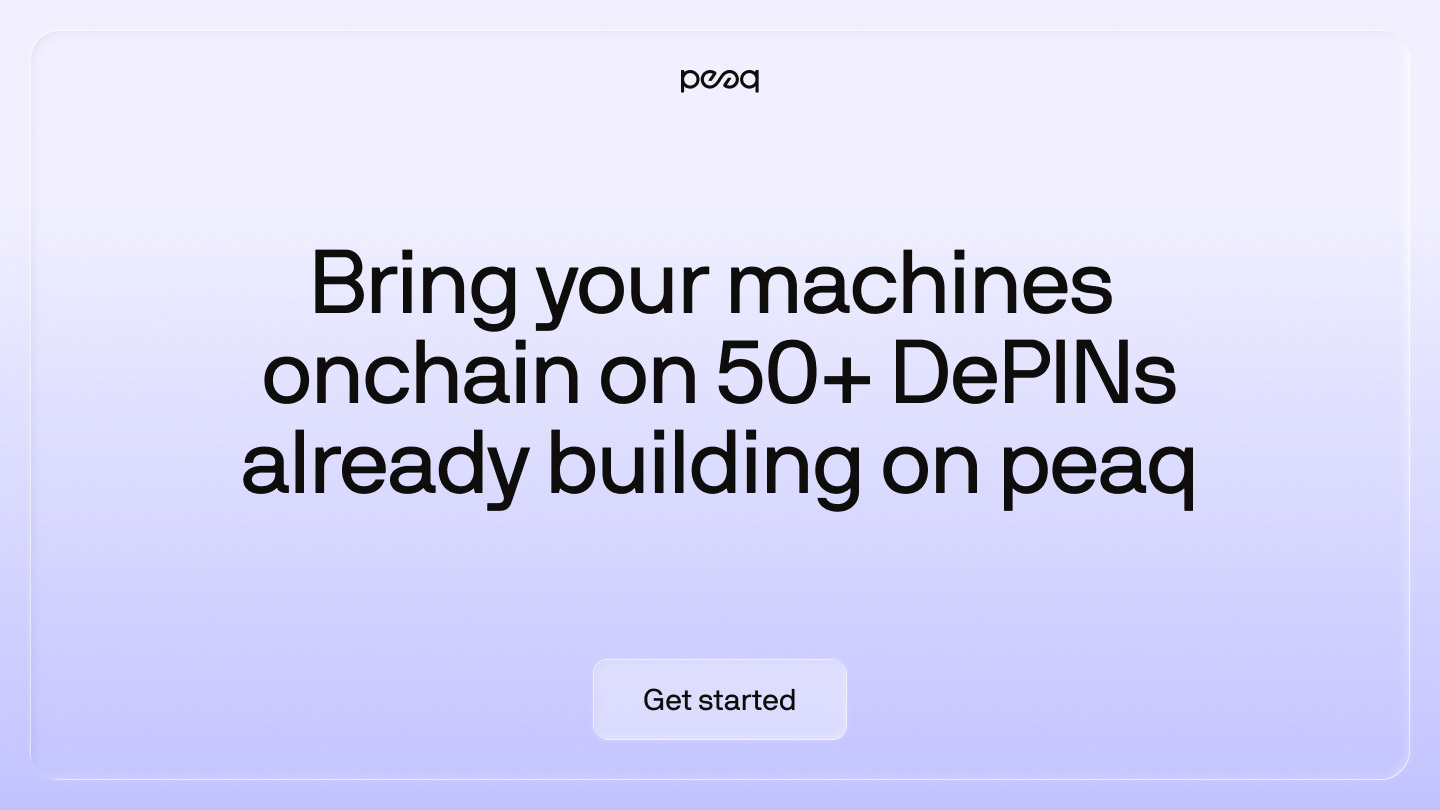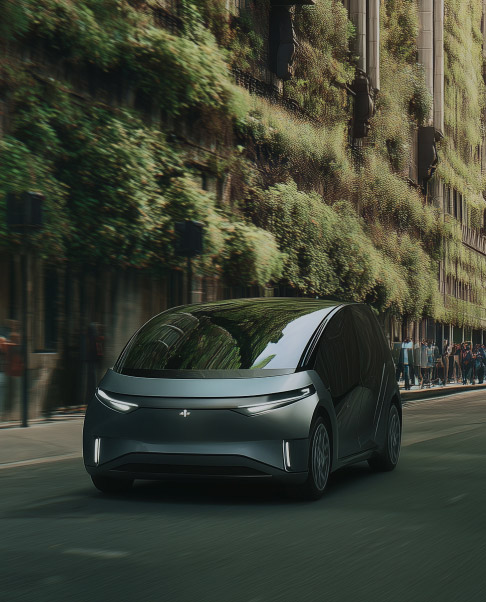Why Onchain Machines Are Inevitable

Take a guess: How many cars are there in the world? About 1.5 billion, Google says, and here’s the thing: Most of them spend most of their time on parking lots. Not exactly productive, and not too good for the environment either. We’re mass-producing machines to mostly sit idle, while the space they occupy could be used for something better, like parks.
Now, if these idle cars were driving around offering rides and handling deliveries, we’d need fewer parking spaces. And fewer cars. And we’d have cheaper taxis and deliveries. And car owners would earn an extra buck on an asset that otherwise mostly sits idle and eats up money. Wins wherever you look.
Let’s put this into perspective: By 2030, we will have 40 billion connected machines — from cars and drones to solar panels and smart plugs. And most of these will have the same lost-opportunity problem. The drones will only get to fly when their owners go on vacays. The solar panels will collect energy for one private battery, while they could be selling it to the local microgrid. And the smart plugs won’t be monitoring green energy use and selling carbon credits. Take it all together, and you see trillions USD worth of economic value that simply won’t materialize.
Not in TradFi, at least.
Machines Meet Outdated Systems
The problem is that traditional finance struggles to keep pace because it was designed for infrequent human transactions. However, unlike humans, who transact only 5 to 10 times a day, many machines will need to be more active. Imagine a sensor selling its data every minute. Or a solar panel auctioning energy off every second. This kind of economic agency takes thousands of micropayments, 24/7 access to the markets, and a network that allows them to scale and be connected globally. Does that sound like “traditional banking”?
The current system is not prepared for this. It’s extremely slow, fees eat into tiny transactions (e.g., $0.30 to process $0.10), and cross-border deals are a nightmare. This means that if we rely on TradFi, we will be missing out on revenue, automation, and bringing idle machines online. It’s not just lost efficiency. It would be a trillion-dollar waste.
The Benefits of Onchain Machines
Bringing machines onchain changes everything. Blockchains like peaq provide them with all they need — machine IDs and wallets, to start with. Thanks to these IDs and wallets, machines can:
- Interact and transact with both humans and other machines
- Automate transactions via smart contracts and AI
- Exchange data and services
- Access a global marketplace of goods and services
- And more
Machines would obviously choose this system because it’s made for them. Their owners will, too. It’s fast, dirt cheap, open, it can handle millions of transactions, with no bank holidays and no additional intermediaries taking a cut. Onchain machines can transact at machine speed (not slow banking speed) and have a system that matches the needs and scale of billions of machines.
Why Onchain Wins
TradFi’s biggest flaw is the “middleman tax”. For example, every card transaction involves up to six different parties — banks, networks, card issuers, payment processors — who take their cut and delay payment settlement. This is the reason why in most countries, small businesses either won’t accept credit cards or avoid payments under $5. A system like that obviously doesn’t work for an economy based on large numbers of microtransactions, like with the sensor selling its data every minute.
Onchain radically changes the status quo for machine efficiency and revenue generation. Onchain is a synonym of decentralization, which means eliminating intermediaries. As for the billions of dollars in fees that they capture — those will be redistributed to the value creators: to the machines, owners, and communities.
Here are just a few opportunities unlocked by onchain machines:
- Onchain, your car can become a robotaxi earning all by itself by offering people rides.
- Your solar panel can sell excess energy at any time of the day.
- Your computer’s GPU can sell idle capacity whenever you are not using it.
These are just three examples, and at least for two of them, there are already DePINs on peaq. No wonder: peaq features 55+ DePIN projects in its ecosystem, and use cases are expanding every month.
Openness and Transparency
There is another benefit of going onchain to consider. When machines are brought onchain, they automatically join a global marketplace for investment and for selling services. A Nigerian community can bootstrap a tokenized solar farm and fundraise from German investors, giving people all over the world new opportunities to invest and unprecedented capital efficiency. This makes the onchain paradigm a lot more flexible and inclusive.
Bringing machines onchain also creates more transparent systems with real-time data that eliminates information asymmetries plaguing traditional markets. In the onchain world, there’s no chance of an Enron-style accounting scandal, because blockchain ledgers are tamper-proof, making it, again, the best technology for the future of the Machine Economy.
All this new efficiency can be expected to compound through network effects and generate a massive amount of productivity that can and will impact the world's GDP by a very large factor. Missing out on all this means a gargantuan opportunity cost, too high for anyone to bear. This cost makes onchain machines basically inevitable.
In other words: Without the onchain capabilities, machines remain less valuable, economically impaired, underutilized, siloed, and excluded from a multi-trillion-dollar marketplace. Obviously, markets don’t like inefficiencies — and since machines are already moving onchain, the new paradigm becomes a self-fulfilling prophecy.
One day, we will look back on offchain machines as we look at fax machines in the age of email — a technology that was once useful, but rendered inefficient and economically obsolete by a superior system. That day is a lot closer than you think… And a lot more inevitable, too.






